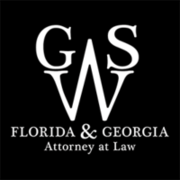TITLE 12
CONSERVATION AND NATURAL RESOURCES
Section 5. Water Resources, 12-5-1 through 12-5-586.
ARTICLE 3
WELLS AND DRINKING WATER
12-5-172. Definitions.
As used in this part, the term:
-
"Administrator" means the administrator of the U.S. Environmental Protection Agency.
-
"Contaminant" means any physical, chemical, biological, or radiological substance or matter in water.
-
"Cross-connection" means any physical arrangement whereby a public water supply is or may be connected directly or indirectly with a nonpotable water supply or unapproved water-supply system, sewer, drain, conduit, pool, storage reservoir, plumbing fixture, or other device which contains or may contain contaminated water, liquid, gases, sewerage, or other waste of unknown or unsafe quality, which may be capable of imparting contamination to the public water supply as the results of backflow, bypass arrangements, jumper connections, removable sections, swivel or changeover devices, and other temporary, permanent, or potential connections through which or because of which backflow or backsiphonage could or would occur.
-
"Director" means the director of the Environmental Protection Division, or his designee.
-
"Division" means the Environmental Protection Division of the Department of Natural Resources.
-
"Federal act" means the Safe Drinking Water Act, P.L. 93-523.
-
"Georgia primary drinking water regulation" means a regulation which:
-
Applies to public water systems;
-
Specifies contaminants which, in the judgment of the director, may have any adverse effect on the health of persons;
-
Specifies for each contaminant either a maximum contaminant level in public water systems if, in the judgment of the director, it is economically and technologically feasible to ascertain the level of such contaminant in such systems, or if, in the judgment of the director, it is not economically or technologically feasible to ascertain the level of such contaminant, each treatment technique known to the director which leads to a reduction in the level of such contaminant sufficient to satisfy the requirements of 42 U.S.C. Section 300g-1;
-
Contains criteria and procedures to assure a supply of drinking water which dependably complies with such maximum contaminant levels, including quality control and testing procedures to ensure compliance with such levels and to ensure proper operation and maintenance of the system, and requirements as to the minimum quality of water which may be taken into the system and siting for new facilities for public water systems.
-
"Municipality" means a city, town, or other public body created by or pursuant to state law.
-
"National primary drinking water regulations" means primary drinking water regulations promulgated by the administrator pursuant to the federal act.
-
"Person" or "persons" means any individual, corporation, company, association, partnership, county, municipality, state agency, or other entity.
-
"Public water system" means a system for the provision to the public of piped water for human consumption, if such system has at least 15 service connections or regularly serves at least 25 individuals. Such term includes but is not limited to any collection, treatment, storage, and distribution facilities under the control of the operator of such system and used primarily in connection with such system, and any collection or pretreatment storage facilities not under such control which are used primarily in connection with such system.
-
"Secondary drinking water regulation" means a regulation which applies to public water systems and which specifies the maximum contaminant levels which, in the judgment of the director or administrator, are requisite to protect the public welfare. Such regulations may apply to any contaminant in drinking water which may adversely affect the odor or appearance of such water and consequently may cause a substantial number of the persons served by the public water system providing such water to discontinue its use, or which may otherwise adversely affect the public welfare.
-
"Waters of the state" means and includes any and all rivers, streams, creeks, branches, lakes, reservoirs, ponds, drainage systems, springs, wells, and all other bodies of surface or underground water, natural or artificial, of this state.
(Ga. L. 1977, p. 351, § 3; Ga. L. 1982, p. 3, § 12.)
U.S. Code.
- The Safe Drinking Water Act, referred to in this Code section, is codified principally as 42 U.S.C.
§
300f et seq.
JUDICIAL DECISIONS
Environmental Protection Division's mandate is limited to public aspects
of water delivery systems and is governed by the provisions of paragraph (11) of O.C.G.A.
§
12-5-172 defining a public water system. Bass v. Ledbetter, 257 Ga. 738, 363 S.E.2d 760 (1988).
Environmental Protection Division authority is confined either to any facilities of the public water system under the operator's control or to any collection or pretreatment storage facilities not under the operator's control. Bass v. Ledbetter, 257 Ga. 738, 363 S.E.2d 760 (1988).
Private lines running from the service connections of the distribution facilities into the homes of subdivision residents were not within the control of the water system operator; consequently, the Environmental Protection Division was charged with no responsibility for those private lines. Bass v. Ledbetter, 257 Ga. 738, 363 S.E.2d 760 (1988).
Cited in
Moore v. Dixon, 264 Ga. 797, 452 S.E.2d 484 (1994).

